20386_Science_with_STEM_Year_4_Earth_and_Space_Sciences_Surface_changes
You also want an ePaper? Increase the reach of your titles
YUMPU automatically turns print PDFs into web optimized ePapers that Google loves.
<strong>Earth</strong> <strong>and</strong> space sciences<br />
SURFACE CHANGES<br />
Lesson 3<br />
Lesson plan<br />
Introduction:<br />
1. Show a selection of images of different-coloured s<strong>and</strong>y beaches to engage students; red s<strong>and</strong><br />
beach , black s<strong>and</strong> beach . How<br />
were these beaches made? What do you notice about the nearby rocks? Do you think the beaches<br />
always looked like this? In pairs, students discuss possible answers. QP<br />
Development:<br />
2. Pass a mortar <strong>and</strong> pestle, <strong>with</strong> rock salt in it, around the classroom for students to have a go at<br />
breaking down the rock salt. Discuss questions including: What do you think will happen to this<br />
rock salt if you grind it <strong>with</strong> the pestle? What will it look like? How might this be similar to how rocks<br />
become s<strong>and</strong> or soil? What acts as the 'pestle' in nature? QP<br />
3. Introduce the term weathering. Students research a definition online or go to , <strong>and</strong> write an agreed definition to place on a word wall. PC<br />
4. In pairs, students conduct their own research to explore how rocks undergo weathering by reading<br />
pages 6, 7 <strong>and</strong> 8 on the BBC Bitesize website at . Note: A QR code<br />
link to this website is provided on page 90 for students to scan as well as the URL. Students then<br />
create a graphic organiser or concept map using page 90, drawing their own graphic organiser, or<br />
using a digital application like Popplet or Book Creator. PC PA C<br />
Differentiation<br />
• Less capable students can draw pictures to explain the weathering process, or retell it orally<br />
using the audio recording function on an application such as Book Creator.<br />
• More capable students can research other websites, such as to<br />
compare information on weathering, <strong>and</strong> add any more information.<br />
5. Students recreate the physical weathering process, freeze-thaw, to demonstrate how it works.<br />
Students use modelling clay to form a rock <strong>and</strong> then create a well in the middle which is filled<br />
<strong>with</strong> water. Seal the hole <strong>with</strong> clay <strong>and</strong> place in the freezer overnight. In the morning, students<br />
photograph the ‘rock’ which should have cracked to allow for the exp<strong>and</strong>ed frozen ice. Students<br />
should predict how the rock will look by drawing a diagram, <strong>and</strong> then compare the predicted<br />
diagram to the photograph taken after being in the freezer overnight. They may use page 91 to<br />
draw/paste their images, or use a digital application like Popplet or Seesaw instead. PC PA<br />
Reflection:<br />
©R.I.C. Publications<br />
Low Resolution Images<br />
Display Copy<br />
6. Watch the video How mountains turn to dust at , which summarises<br />
the process of weathering rock <strong>and</strong> how it <strong>changes</strong> <strong>Earth</strong>’s surface. Did you know that it took so<br />
many years to break down rock? What do you think this means for the future? What will <strong>Earth</strong> look<br />
like? What do you think is the most powerful weathering tool? C QP<br />
R.I.C. Publications® – www.ricpublications.com.au YEAR <strong>Science</strong>:<br />
4 A <strong>STEM</strong> APPROACH 89


















